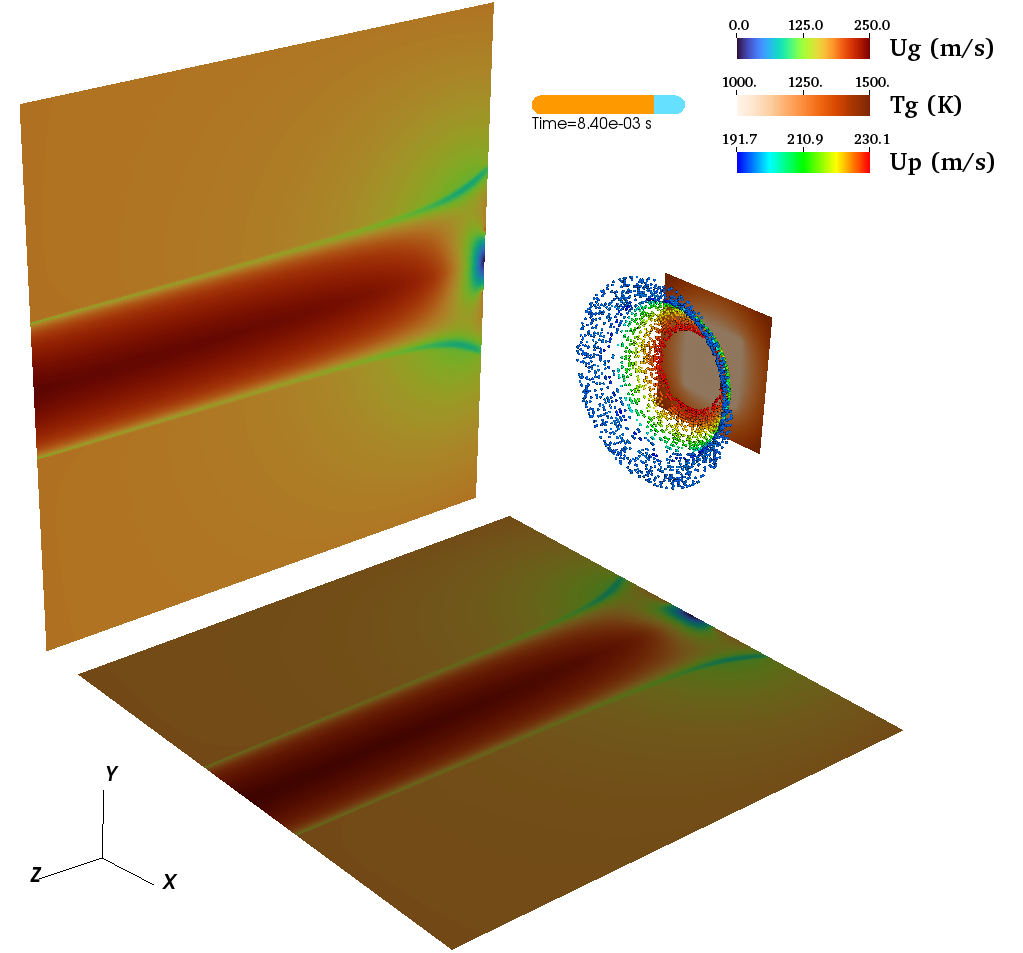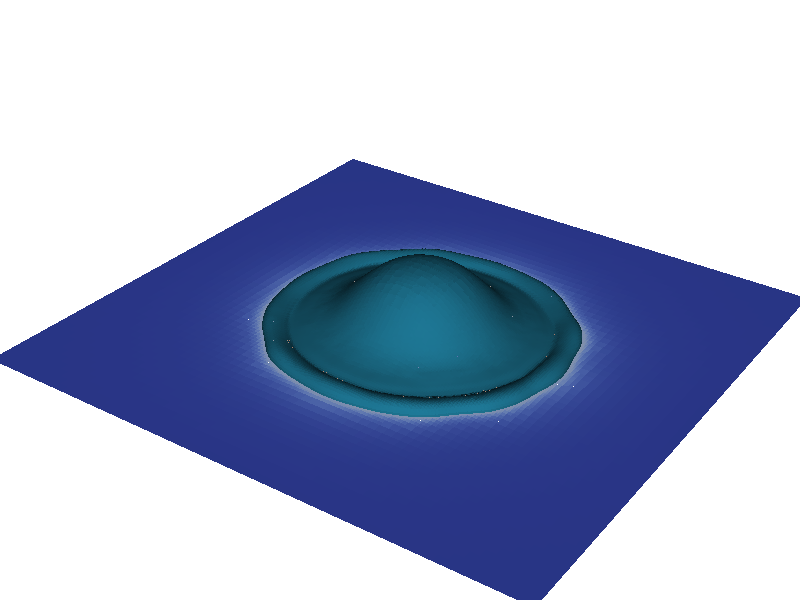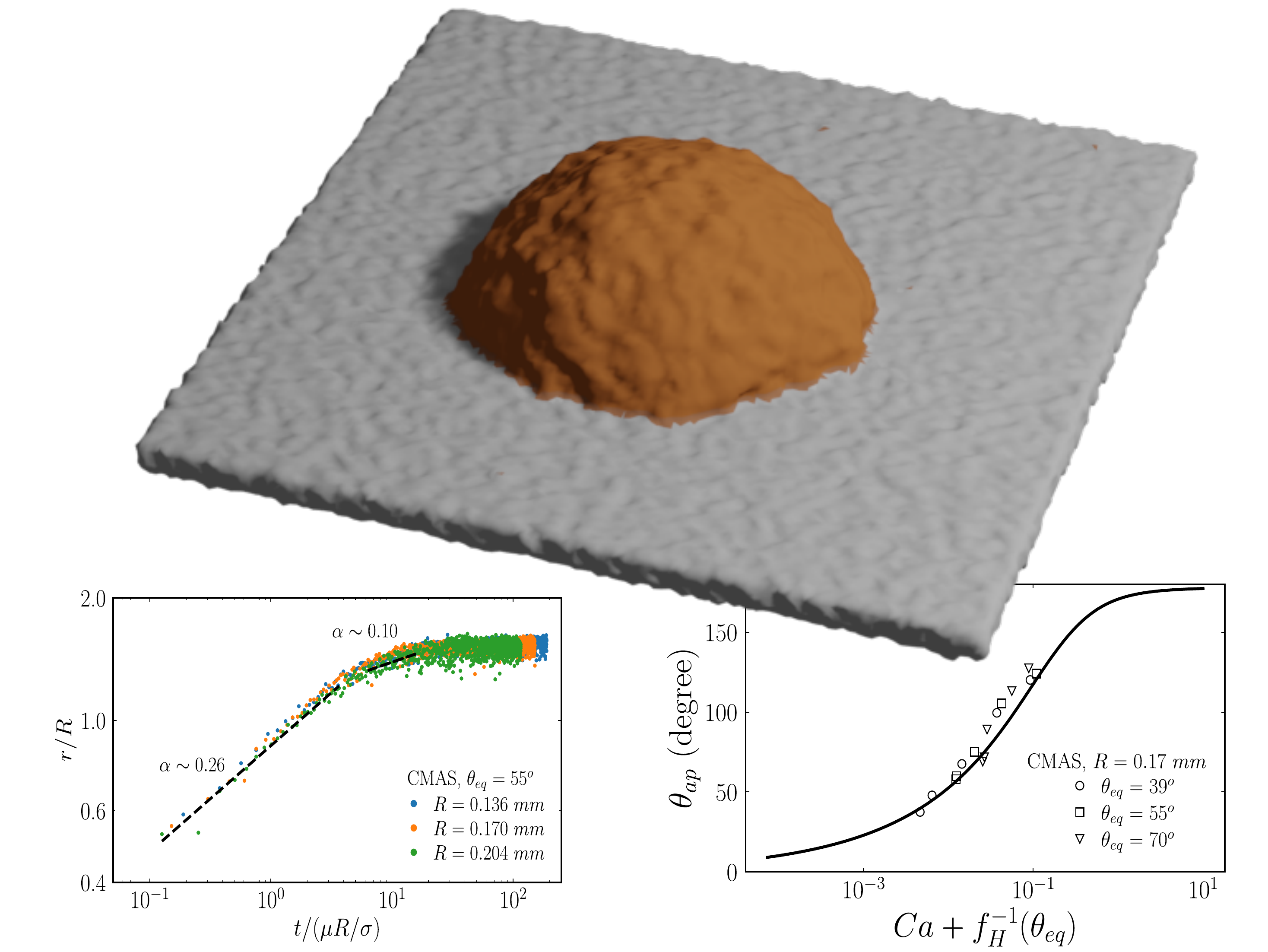Multiscale modeling of particle deposition
Particle deposition
The depostion of different sand mixtures (CMAS, AFRL 02, AFRL 03) on a 7YSZ coating is investigated. These simulations are modeled after the hot-particulate ingestion rig (HPIR) experiments performed at the ARL. The sand particles are injected at 1700 K from a circular nozzle operating at Mach 0.3. Two-way coupled Euler-Lagrange simualtions of the turbulent multiphase jet are performed using a high-order DNS solver, Athena-RFX, coupled with a WENO-based symplectic particle method. The deposition is modeled using the model proposed by Jeffrey Bons at the Ohio state university.

Fig. 1. Isometric view of a ring of particles being injected and colliding with the material coupon. The flow is along the negative z-axis.
Interface-resolved droplet simulations
Droplet impact on solid surfaces is investigated using the volume-of-fluid method. The molten droplet is assumed to be at isothermal conditions while its spreading and wetting dynamics are investigated. For this, the open-source code Basilisk is used.

Fig. 2. Droplet spreading and formation of lamella upon impact on a smooth surface at We=58.
Mesoscopic modeling of surface wettability
The wettability and infiltration of a molten sand droplet is investigated using the mesocopic many-body dissipative particle dynamics (mDPD) method. DPD is a numerical approach based on coarse-grained molecular dynamics wherein each DPD particle represents a cluster of atoms/molecules. The surface wettability and infiltration on funtional and realistic TBC surface morphologies is investigated using the arbitrary BC capability of the DPD method. The mDPD implementation in the open-source code LAMMPS is used in this work. For more details on the isothermal spreading of a molten sand droplet on a smooth surbstrate, see the published paper.

Fig. 3. Equilibrium configuration of a molten CMAS droplet on a flat surface. The evolution of the contact radius and the apparent contact angle is shown in the insets.
